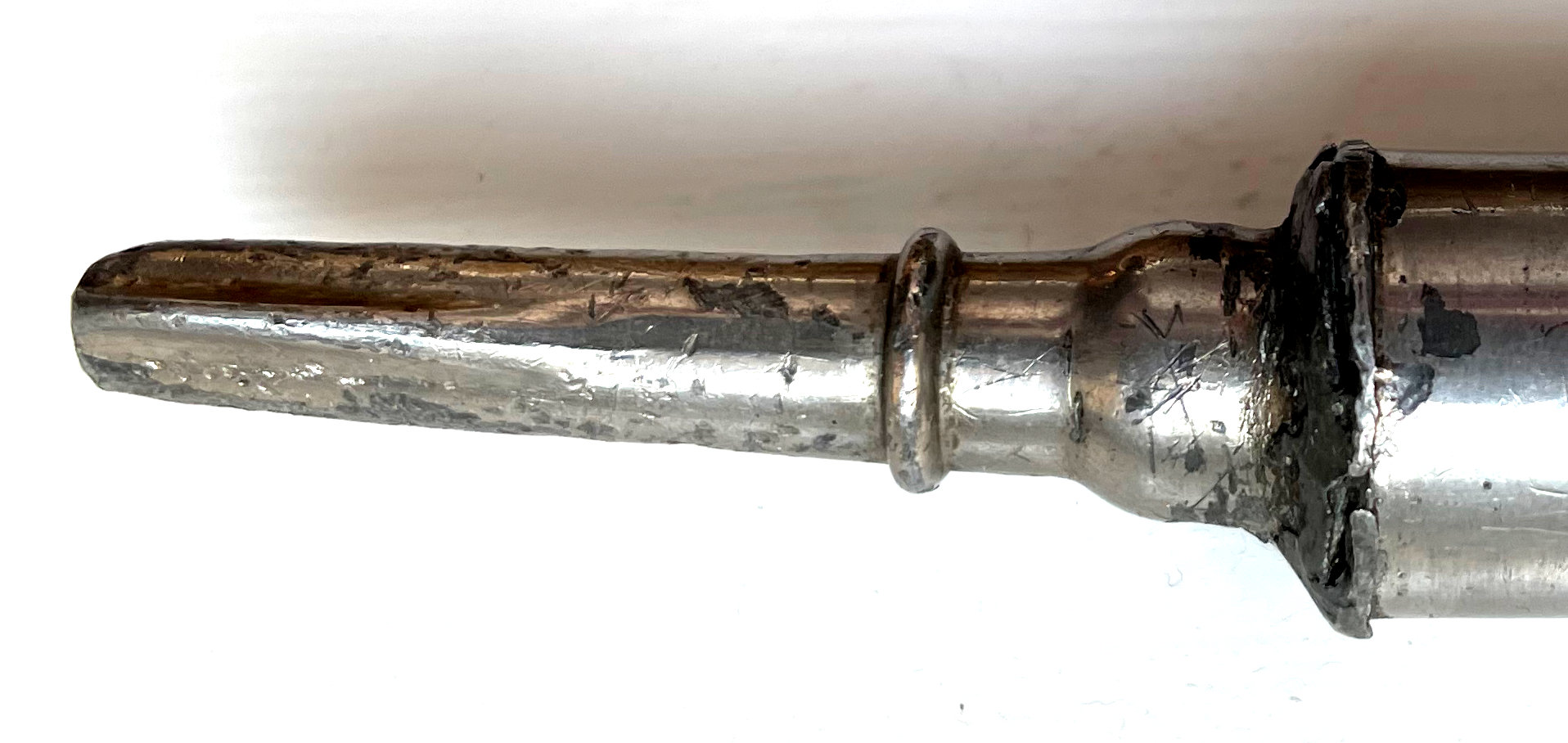One of them called attention to a metal flageolet made by Charles Mathieu that was for sale. It is now in my hands and I have a very specific question about it.
The instrument appears almost certainly to be made of nickel-plated pewter and is therefore very much a tin whistle. It bears his model no. 3, is pitched in D (at about A446), and speaks easily and evenly from the bottom of the first octave to the F♯ in the third octave. There’s more to be said about its tuning but I’ll defer that for the while.

The plating around the fingerholes has worn away and the patination on the exposed casting indicates, as expected, that there is lead in the alloy. What might also be taken for a solid lead block is in fact hollow underneath the floor of the windway (but in the direction opposite from current cast plastic mouthpieces). The floor of the windway is of even thickness that I’d guestimate to about one millimeter, and extends two centimeters upward from the top edge of the window.
There can be little doubt that the intention was to keep condensation from forming in the windway, collecting it instead in a chamber that could be emptied when necessary through the hole in the mouthpiece bit. This retains the initial design goal of the English wooden flageolets that this emulates. I’m not about to play it long enough to test how well it performs in that regard, at least not without first having inspected the chamber.
The segment of the instrument that includes the bit was obviously fitted to the instrument after it was voiced. It separated from it at some later date due to damage and was crudely soldered back into place. That seam has itself since become damaged and leaks air.

And at long-winded last, this brings me to the question. Was it Mathieu’s practice to fuse the bits to the bodies of his flageolets, or to have a friction fit? If nothing else that would enable keeping the chamber clean, as is possible on the prototypal wooden instruments. Depending on the answer, I’ll either seal the crack with dental wax, or see if the cap can be separated and refitted properly. (I suspect that the latter wouldn’t be possible anyway, due to the proximal melting points of the solder and the pewter.)


